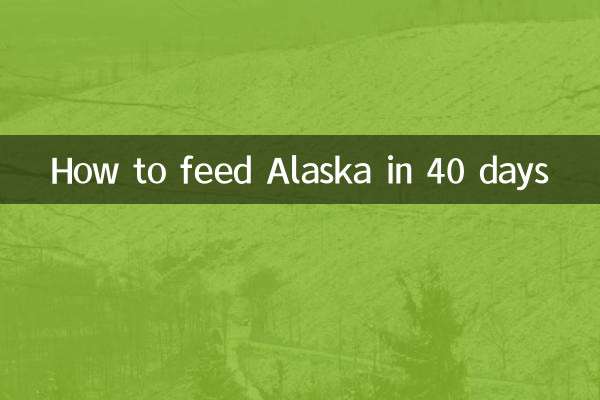How to raise a puppy that is not yet one month old
Raising a puppy that is not yet a month old is challenging but also extremely rewarding. Puppies need special care and attention during the first few weeks of their lives to ensure they grow up healthy. Here is a detailed guide on how to care for a pre-month-old puppy, including feeding, warmth, hygiene and health monitoring.
1. Feeding Guide

Puppies that are not yet a month old usually need to be breastfed, but if the mother is not around, they will need to be hand-fed. The following are feeding precautions:
| Feeding content | Frequency | Things to note |
|---|---|---|
| Breast milk or special milk powder | Every 2-3 hours | Use pet-specific milk powder and avoid cow's milk |
| Feeding amount | 5-10ml each time | Adjust according to body weight to avoid overdose |
| feeding tools | Bottle or syringe | Make sure the nipple is the right size to avoid choking on milk |
2. Warming measures
Puppies have weak body temperature regulation capabilities and need to pay special attention to keeping warm. Here are some tips for keeping warm:
| Ways to keep warm | Temperature requirements | Things to note |
|---|---|---|
| Heating pad or electric blanket | 28-32°C | Avoid overheating and check temperatures regularly |
| Blankets or towels | keep dry | Replace regularly to avoid moisture |
| ambient temperature | Room temperature should not be lower than 25°C | Avoid direct blowing from the air or air conditioner |
3. Health management
Puppies' immune systems are not yet fully developed, so hygiene management is particularly important. The following are the key points of hygiene management:
| hygienic content | Frequency | Things to note |
|---|---|---|
| Clean excrement | after each feeding | Wipe with warm water and keep dry |
| Clean living environment | once a day | Use pet-specific disinfectants |
| take a bath | Frequent bathing is not recommended | If you need to take a shower, use warm water and dry quickly |
4. Health monitoring
Monitor the health of your puppies regularly and detect abnormalities promptly. The following are the key points of health monitoring:
| Monitoring items | normal behavior | abnormal behavior |
|---|---|---|
| weight gain | Increase by 5-10 grams per day | No weight gain or loss |
| mental state | Lively and responsive | lethargy, listlessness |
| Excretion status | Stool is well-formed and of normal color | Diarrhea, constipation, or bloody stools |
5. Frequently Asked Questions
The following are some common questions and answers when raising puppies that are not yet one month old:
1. What should I do if my puppy doesn’t eat milk?
It may be that the milk temperature is not appropriate or the nipple is too large. Try adjusting the milk temperature (closer to body temperature) or changing to a smaller nipple. If you are still not nursing, it is recommended to consult your veterinarian.
2. Why do puppies keep barking?
It could be hunger, cold, or discomfort. Check feeding and warmth to ensure a comfortable environment. If the barking continues, it may be a health problem and requires prompt medical treatment.
3. When can weaning begin?
Usually soft food can be gradually introduced after the puppy reaches 4 weeks of age, but complete weaning must be carried out after 6-8 weeks of age.
6. Summary
Caring for a pre-month-old puppy requires patience and care, especially in terms of feeding, warmth, hygiene and health monitoring. Through scientific care methods, puppies can be helped to successfully pass this critical period and grow up healthily. If you encounter a problem that cannot be solved, prompt consultation with a professional veterinarian is key.
I hope this guide helps you take better care of your pup!

check the details

check the details